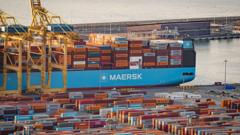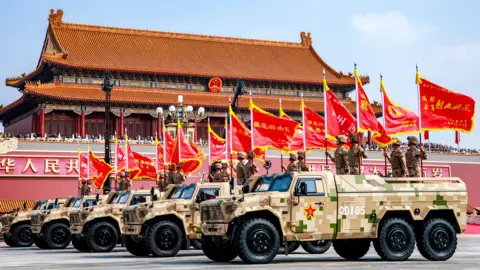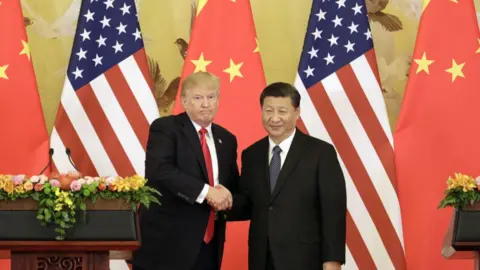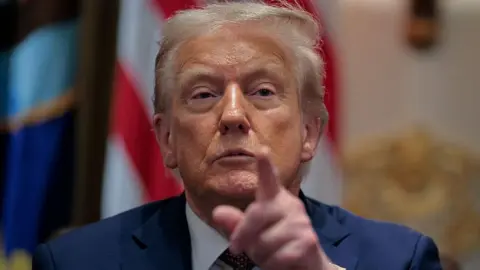The US and the European Union have reached a trade agreement after intense negotiations, signifying a critical moment for both economic giants. This accord arrives just before the US begins another significant round of talks concerning tariffs with China. The direct involvement of both President Donald Trump and European Commission President Ursula von der Leyen has been crucial in formalizing the deal, similar to previous negotiations led by Trump.
The partnership between the US and EU, often recognized as "the world's largest bilateral trade and investment relationship," is vital; numerous businesses and jobs on both sides rely heavily on this relationship. Both Trump and von der Leyen can express success from this agreement—EU countries avoid potentially higher tariffs while the US anticipates about $90 billion in tariff revenue based on previous trade figures along with an expected $600 billion in investment influx.
However, many key details remain ambiguous, particularly regarding the scheduling and specific sectors related to the anticipated investments. The European bloc and Washington have had a challenging path leading to this moment, with each side exerting pressure during negotiations. No party wished for talks to extend past the August deadline, particularly as President Trump has persistently criticized Europe's trade practices that he views as detrimental to American interests. For instance, the U.S. imported $236 billion more from the EU in the previous year than it exported.
Moreover, the stringent regulatory environment within the EU has compounded concerns, presenting obstacles for American companies looking to penetrate the European market. Von der Leyen's comments on the need to rectify trade imbalances suggest an understanding on her part of the need for a more equitable arrangement.
As the agreement's implications unfold, it signals the seriousness with which Trump approaches renegotiating international economic relationships. Given the EU's diverse makeup of 27 countries, achieving consensus is a task fraught with complexity.
Simultaneously, the momentum from this EU agreement could be beneficial as the US approaches talks with Japan and further key partners, Cambodia, and China. Expectations for the ongoing US-China negotiations suggest that the potential for a truce on higher tariffs might emerge in the near future. However, despite the encouraging developments, China’s rigid stance might complicate progress, leaving global trade dynamics precarious in the coming months.
The partnership between the US and EU, often recognized as "the world's largest bilateral trade and investment relationship," is vital; numerous businesses and jobs on both sides rely heavily on this relationship. Both Trump and von der Leyen can express success from this agreement—EU countries avoid potentially higher tariffs while the US anticipates about $90 billion in tariff revenue based on previous trade figures along with an expected $600 billion in investment influx.
However, many key details remain ambiguous, particularly regarding the scheduling and specific sectors related to the anticipated investments. The European bloc and Washington have had a challenging path leading to this moment, with each side exerting pressure during negotiations. No party wished for talks to extend past the August deadline, particularly as President Trump has persistently criticized Europe's trade practices that he views as detrimental to American interests. For instance, the U.S. imported $236 billion more from the EU in the previous year than it exported.
Moreover, the stringent regulatory environment within the EU has compounded concerns, presenting obstacles for American companies looking to penetrate the European market. Von der Leyen's comments on the need to rectify trade imbalances suggest an understanding on her part of the need for a more equitable arrangement.
As the agreement's implications unfold, it signals the seriousness with which Trump approaches renegotiating international economic relationships. Given the EU's diverse makeup of 27 countries, achieving consensus is a task fraught with complexity.
Simultaneously, the momentum from this EU agreement could be beneficial as the US approaches talks with Japan and further key partners, Cambodia, and China. Expectations for the ongoing US-China negotiations suggest that the potential for a truce on higher tariffs might emerge in the near future. However, despite the encouraging developments, China’s rigid stance might complicate progress, leaving global trade dynamics precarious in the coming months.




















